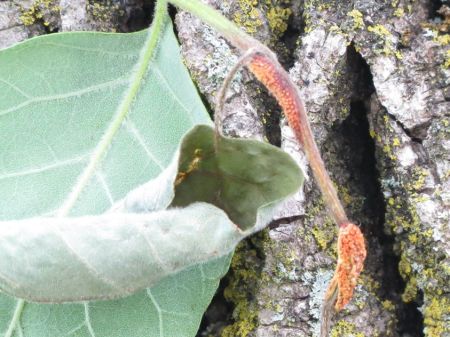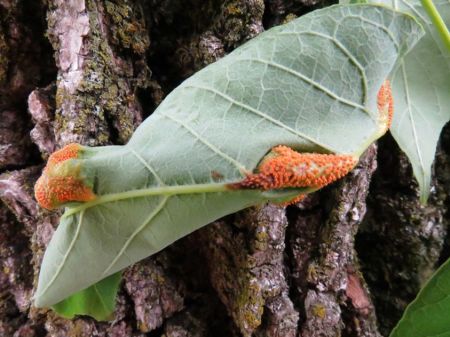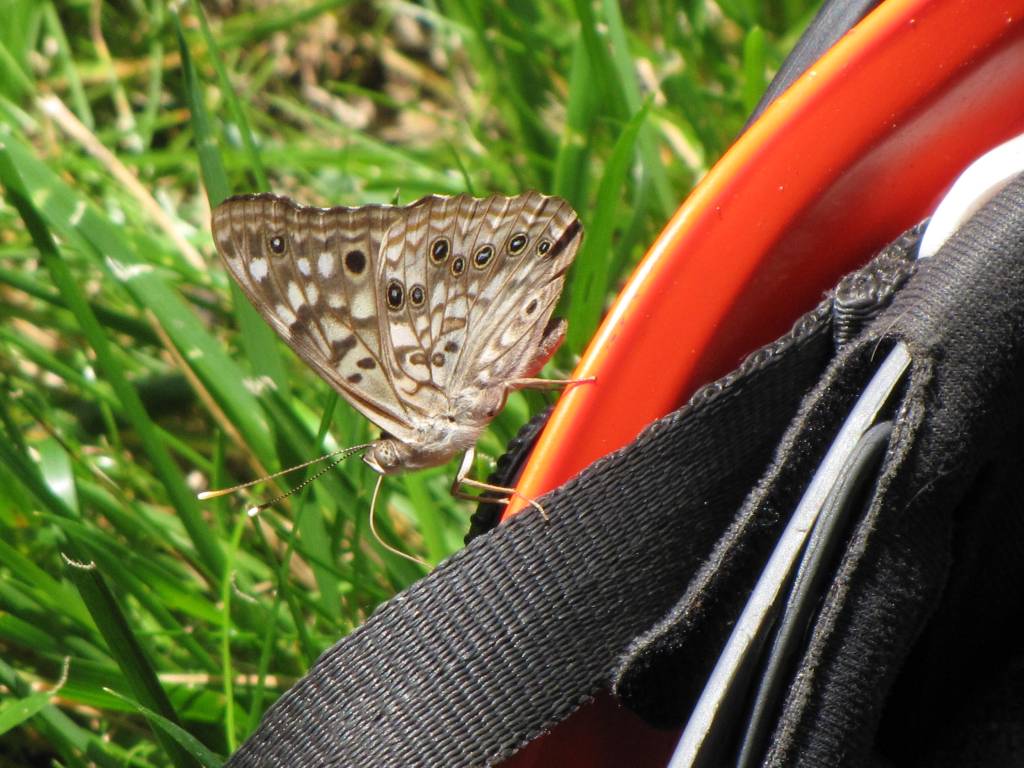Lots of local news coverage on the impending invasion of the emerald ash borer has many owners of ash trees alert for any unusual symptoms. So I was not surprised by the number of recent calls I’ve been getting about blighted ash leaves. Leaf drop in mid May is a common phenomenon, especially when it’s rainy when the leaves are just expanding. The culprit usually is a leaf disease called ash anthracnose which, while the symptoms can be alarming, it’s generally temporary and pretty harmless. But when I got two different calls yesterday-on Memorial Day- in which both clients used the word “orange’ in describing the symptoms- I realized something unusual was going on. Here’s what I found at a client’s property in Pottstown:



The disease is ash rust, Puccinia sparganioides. Spores from the disease on ash cannot infect another ash. They can only infect an alternate host, which is cordgrass which grows in salt marshes. Ash rust is common near salt marshes. But we are quite a distance from the nearest cordgrass marsh, making this a rather unusual event.








![IMG_9255[1]](https://jacobstreesurgery.files.wordpress.com/2012/06/img_92551.jpg?w=450)
![IMG_9257[1] ash anthracnose](https://jacobstreesurgery.files.wordpress.com/2012/06/img_92571.jpg?w=450)
![ash%20anthracnose[1]](https://jacobstreesurgery.files.wordpress.com/2012/06/ash20anthracnose1.jpg?w=450)